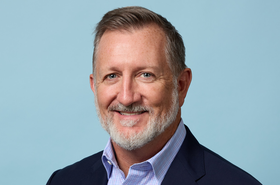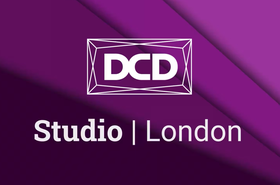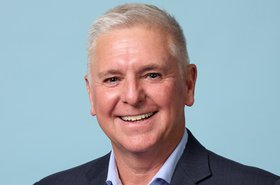When Ireland’s EirGrid imposed a de facto moratorium on new data centers, it sent shockwaves through the European tech industry. But this wasn’t an isolated policy decision – it was a canary in the coal mine, signaling a harsh reality that European AI infrastructure builders can no longer ignore.
The continent’s aging power grids simply weren’t designed for the explosive energy demands of AI, and traditional backup power solutions are proving inadequate for the task ahead.
Unlike the Middle East, where nations like the UAE and Saudi Arabia are building AI infrastructure from the ground up with seemingly unlimited resources, Europe faces a more complex equation: how to satisfy AI’s voracious appetite for power while navigating strict regulatory frameworks, aging grid infrastructure, and increasingly ambitious sustainability targets.
The numbers tell a stark story. European data center IT load demand is projected to grow from 10GW in 2023 to approximately 35GW by 2030, representing a staggering 20 percent compound annual growth rate.
Even more sobering, data center loads could account for 15-25 percent of all electricity demand across the continent. Despite European data centers expanding capacity by 22 percent this year, operators still struggle to meet surging demand.
The strain is already visible across key markets. In Ireland, data centers are projected to reach 30 percent of electricity demand by 2030 – a trajectory that forced EirGrid’s hand. The pressure has become so intense that data centers are now connecting to gas networks to circumvent power network constraints, highlighting just how desperate the situation has become.
This crisis is reshaping Europe’s traditional data center geography. Major hubs such as FLAPD have reached their highest capacity, leading to electricity grid and land constraints, with Amsterdam and Dublin – once cornerstones of the traditional markets – now facing significant expansion limitations.
Meanwhile, Germany has emerged as a powerhouse, experiencing its strongest year ever for data center development in 2023, while the UK now dominates upcoming European capacity with nearly 25 percent of total power capacity.
The fundamental challenge isn’t just about generating more power – it’s about rethinking how power is delivered and managed at the infrastructure level. Traditional UPS systems were designed for predictable workloads with gradual power ramps, but AI workloads are different.
They demand microsecond-scale power delivery to handle unpredictable spikes, while GPU racks are expected to reach 600kW within 12 to 24 months. This reality is forcing European operators to innovate on the power layer, transforming UPS from simple backup systems into intelligent energy management platforms.
This innovation imperative is converging with Europe’s increasingly stringent regulatory environment, creating both challenges and opportunities for forward-thinking operators.
The new Energy Efficiency Directive requires data center operators to report key performance indicators to a European database, adding transparency requirements that will expose inefficiencies in legacy power systems.
Additionally, the EU Battery Regulation 2023/1542 mandates 95 percent recycling rates for lead-acid batteries and 70 percent for lithium-ion by 2035, while starting in 2026, all batteries in the EU must carry labels detailing manufacture date, weight, and chemical composition.
These regulatory pressures aren’t obstacles – they’re catalysts for adopting next-generation power solutions that can meet both performance and compliance requirements simultaneously.
Enter Immediate Power Solutions (IPS) – a category of power delivery architecture designed specifically for the AI era. Unlike traditional UPS systems that ramp power over seconds or minutes, IPS delivers high-rate power instantly, allowing infrastructure to be right-sized for normal operation while still meeting peak demand during microsecond-scale power surges.
ZincFive is pioneering this approach with its nickel-zinc (NiZn) battery technology, which offers compelling advantages for European operators navigating the continent’s unique constraints. The technology’s pulse-ready architecture aligns perfectly with AI workloads’ unpredictable power demands, giving it a unique capability to support AI dynamic workloads and traditional IT demands, in one compact footprint.
Its superior safety profile alleviates European concerns around lithium-ion thermal runaway in urban deployments, while its sustainability advantages make NiZn battery systems a practical choice for environmentally friendly data center operations.
With a design that prioritizes recyclability, NiZn battery technologies are well suited to meet the requirements of the EU Battery Regulation and align well with circular economy principles.
The environmental impact of NiZn is also significantly lower than other battery chemistries, producing up to approximately 50 percent lower greenhouse gas emissions than lead-acid or lithium-ion batteries over their lifetime.
To support operators in meeting sustainability benchmarks, ZincFive provides detailed life cycle assessments like the EcoPassport PEP declaration, to inform greener infrastructure decisions.
Additionally, the technology operates at ambient temperatures, reducing cooling demands on already constrained power budgets, while its high power density in an industry-leading footprint makes it ideal for space-limited European facilities.
Perhaps most importantly for European operators, ZincFive’s solutions are designed to integrate with existing UPS architectures, making them retrofit-friendly for facilities that can’t afford complete infrastructure overhauls for both traditional and AI pulse load applications.
The company’s partnerships with industry leaders such as Vertiv and ABB demonstrate a collaborative, system-level approach that European integrators will find appealing. This partnership-oriented strategy is crucial as European operators seek solutions that work within existing ecosystems rather than requiring wholesale infrastructure replacement.
With carbon footprint labeling requirements arriving in 2026 and recycling mandates tightening through 2035, operators need power solutions that are forward-compatible with evolving regulations.
As Europe grapples with the intersection of AI ambitions and energy realities, the continent faces a choice: innovate on the power layer or fall behind in the global AI race. Traditional approaches that worked for legacy workloads simply won’t scale for AI’s demands, especially within Europe’s regulatory and grid constraints.
The operators who recognize this reality and embrace advanced power solutions like ZincFive’s NiZn technology won’t just solve immediate infrastructure challenges – they’ll position themselves as leaders in sustainable, safe, and high-performing AI infrastructure.
In a region where regulatory compliance and environmental responsibility are non-negotiable, the power layer may well become Europe’s secret weapon in building AI infrastructure that’s both powerful and sustainable.
The question isn’t whether Europe can build AI infrastructure without breaking its grid – it’s whether European operators will embrace the innovations that make it possible.
To learn more about nickel-zinc technology, visit zincfive.com.
More from ZincFive

Sponsored
Beyond lead-acid and lithium-ion: How nickel-zinc is powering the future of data centers
While legacy battery chemistries remain competitive in UPS backup systems, nickel-zinc has emerged as a strong, viable solution in the rapidly evolving data center landscape

DCD>Studio: Exploring nickel zinc batteries with Brandon Smith, ZincFive
Brandon Smith from ZincFive speaks with DCD's Sebastian Moss about nickel zinc batteries and how they may serve as a bridge between lithium and lead acid technologies.

Sponsored
Tackling operational challenges in modern data centers
Achieving a balance of reliability, sustainability, and safety
Read the orginal article: https://www.datacenterdynamics.com/en/opinions/can-europe-build-ai-infrastructure-without-breaking-its-grid/



